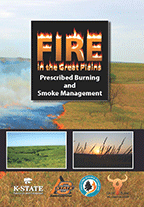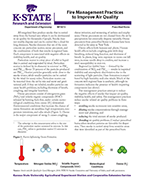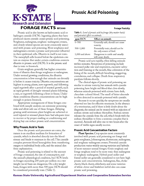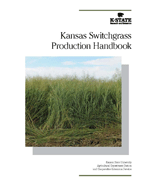Crops » Forages
-
DVD585

|
Fire in the Great Plains
This two-DVD set contains videos on prescribed burning and smoke management in the Great Plains, along with a description of the Kansas Flint Hills Smoke Management Plan. Also included are a bibliography and accompanying electronic publications.
$13.15
|
-
MF3073

|
Patch Burn Grazing
Patch burn grazing is a method of range management in which only a portion of a pasture or management unit is burned and then grazed, either by domestic livestock or native wildlife. 2 p.
$0.40
|
-
MF3072

|
Fire Management Practices to Improve Air Quality
Reduce smoke-related air quality problems when burning range and pastures. Avoid smoke movement into sensitive areas, dilute smoke concentrations through management and planning, and reduce total amount of smoke produced. Publication includes details about weather that affects smoke dispersion. 4 p.
$0.55
|
-
MF3040

|
Prussic Acid Poisoning
Prussic acid is also known as hydrocyanic acid or hydrogen cyanide (HCN). Grazing plants that have produced excess cyanide causes prussic acid poisoning. Sorghums, sudangrass, sorghum–sudangrass crosses, and closely related species are most commonly associated with prussic acid poisoning. 2 p.
$0.30
|
-
MF3018

|
Kansas Switchgrass Production Handbook
Switchgrass (Panicum virgatum L.) is a warm season perennial. It has been used for livestock forage, soil stabilization, and wildlife cover, and is a leading potential cellulosic bioenergy crop. 16 pages, color cover.
$2.25
|
|
|